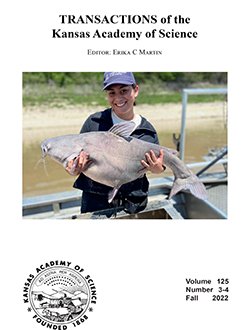The Broad-headed Skink is listed as Threatened in the state of Kansas under the Nongame and Endangered Species Conservation Act of 1975 and recent surveys have focused on this species. In Kansas, a similar species, the Common Five-lined Skink, occurs in the same range and habitats as the Broad-headed Skink. Visual characteristics of the two species overlap in hatchlings and sub-adults, where their bodies are black with five olive-colored lines that extend the length of their backs. Both species have bright blue tails until they reach maturity. The use of supralabial scale and postlabial scale counts is the most reliable way to distinguish between the two species; however, an individual may not represent the species exactly as stated in keys found within field guides. In the summers of 2016 and 2017, we collected genetic samples from Broad-headed Skinks and Common Five-lined Skinks and compared the genetic identification to meristic data collected in the field. We found Broad-headed Skinks express more variation in scale counts than Five-lined Skinks and the keys we used account for this variation.
How to translate text using browser tools
3 November 2022
Meristic Variation in Kansas Broad-Headed Skinks (Plestiodon laticeps) and Common Five-Lined Skinks (P. fasciatus)
Allison Sowards,
Zackary Cordes,
J. Daren Riedle
ACCESS THE FULL ARTICLE
cytochrome oxidase I (COI)
postlabial scales
supralabial scales





